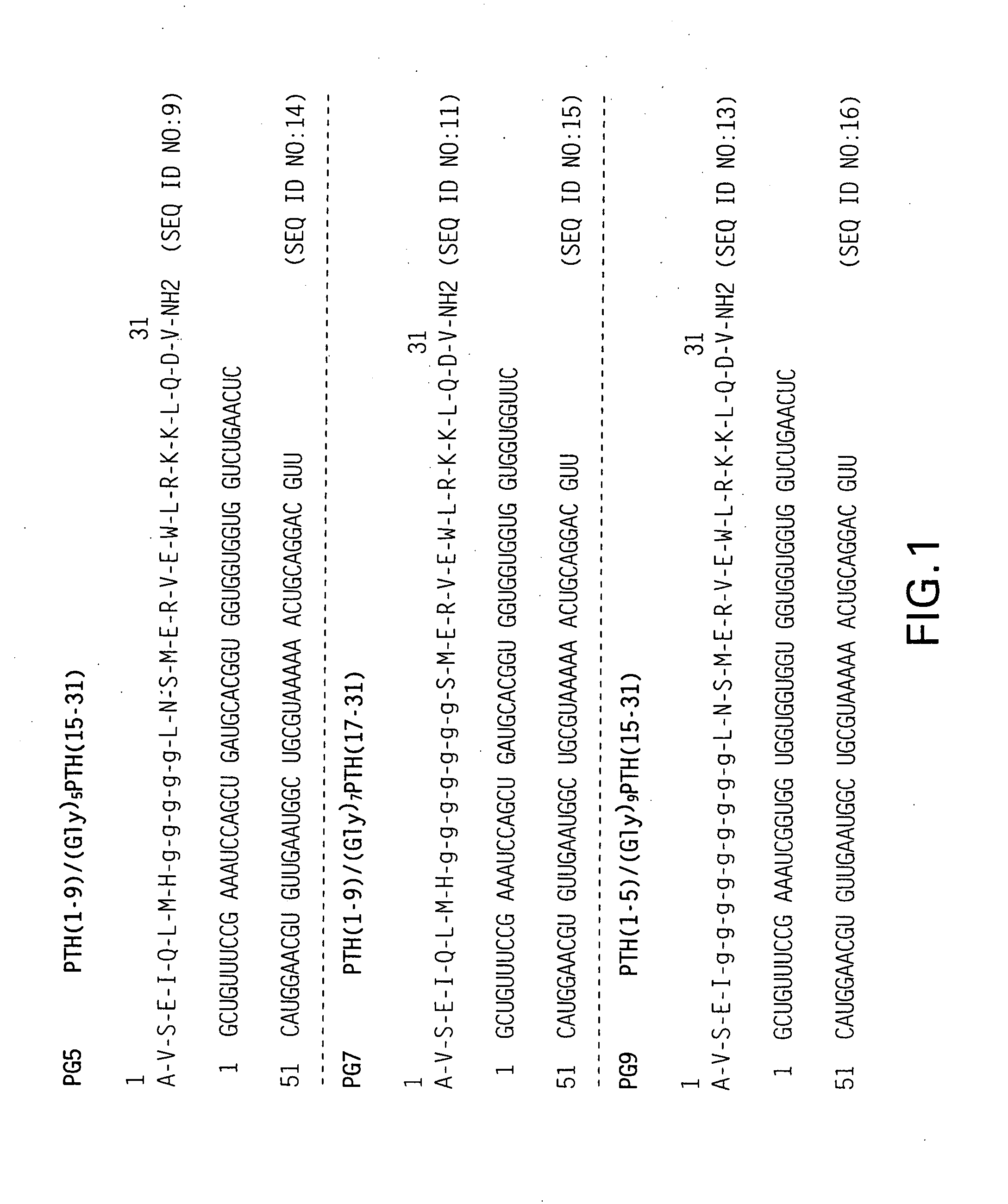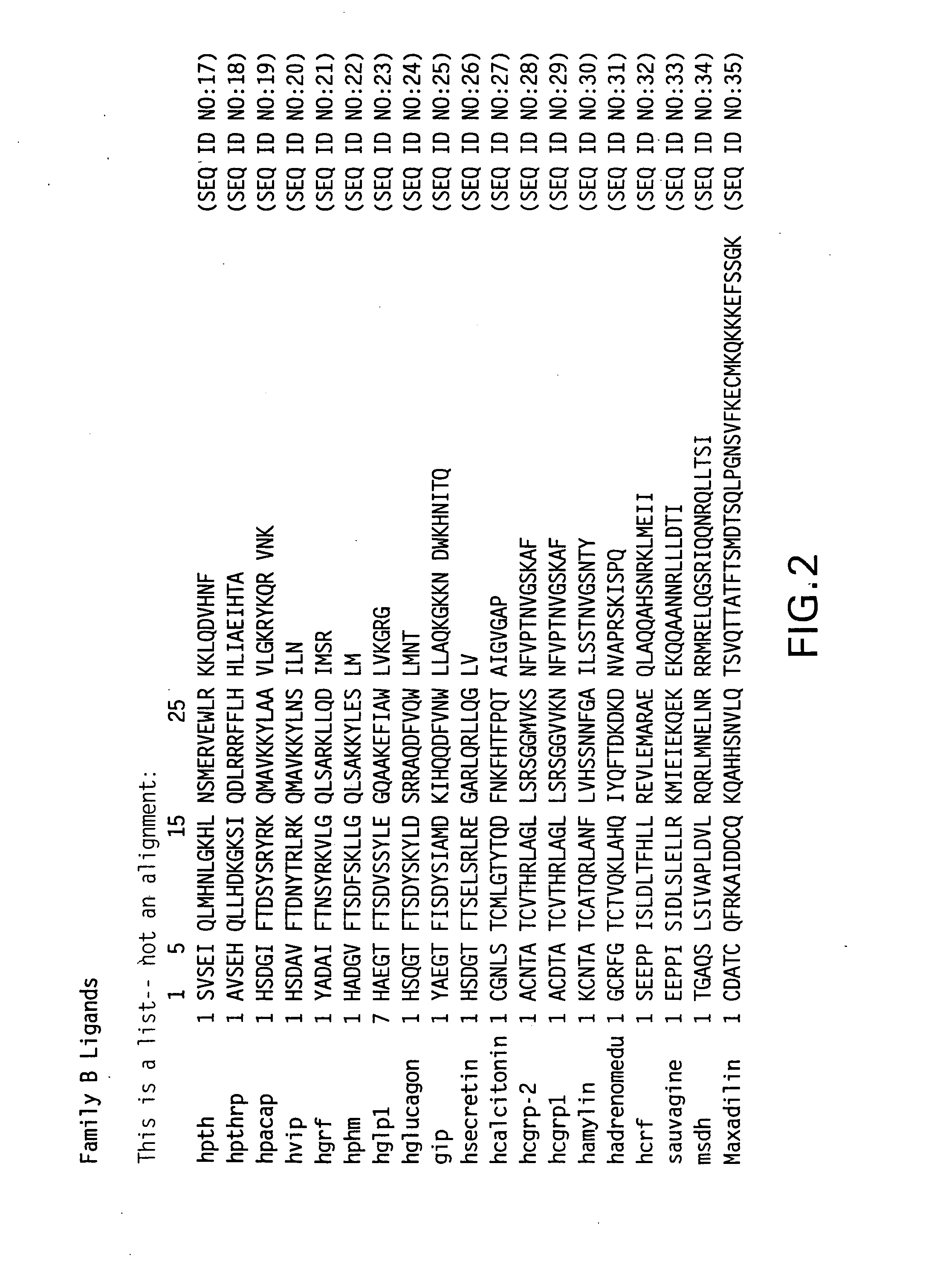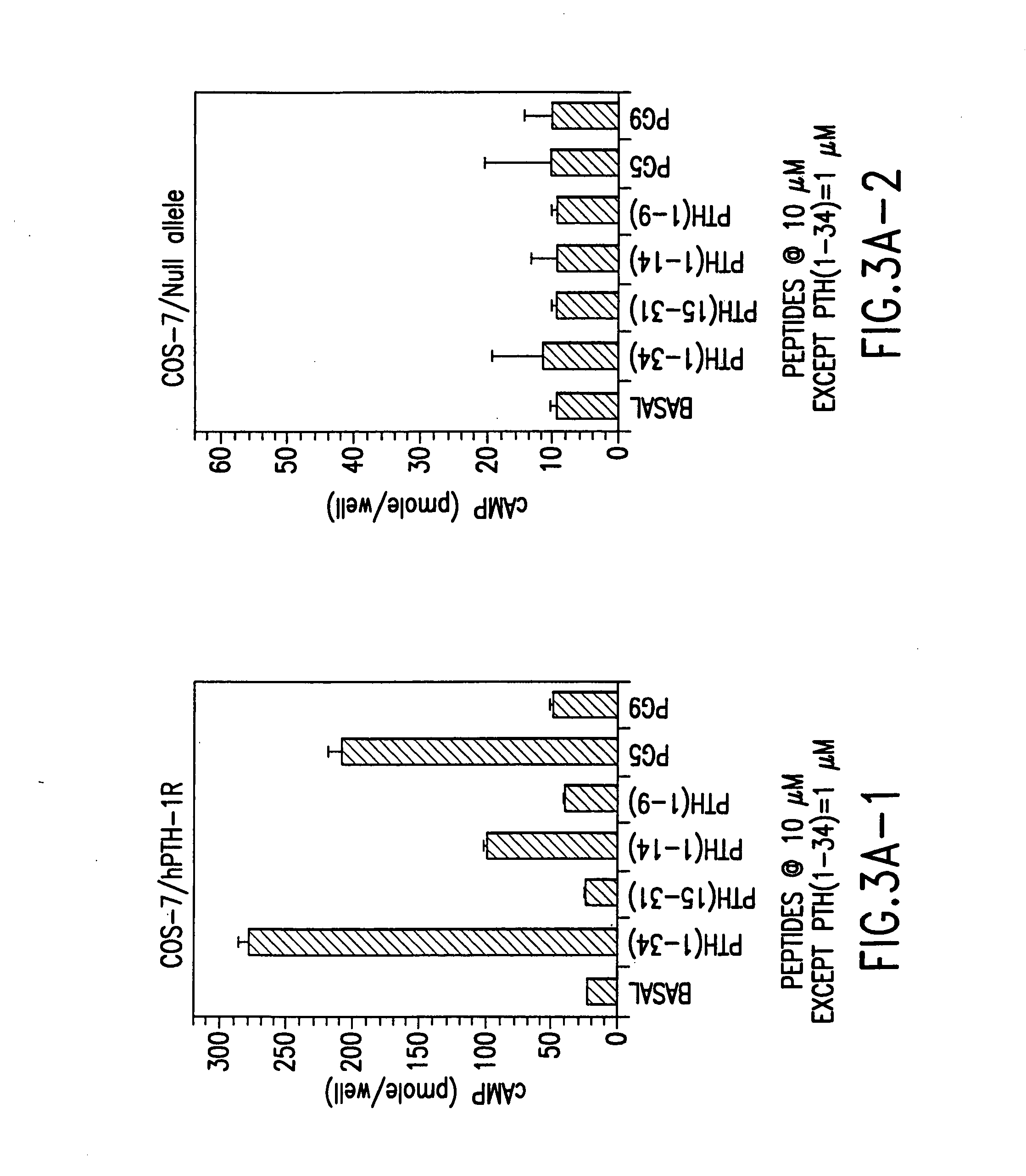PTH functional domain conjugate peptides, derivatives thereof and novel tethered ligand-receptor molecules
a functional domain and peptide technology, applied in the field of molecular biology, developmental biology, neurobiology, endocrinology and medicine, can solve the problems of inconvenient use of peptides as osteoporosis treatments, difficulty in conventional synthetic chemistry preparation of larger peptides, and inability to meet the requirements of peptide size and other issues to achieve the effect of improving efficacy and potency
- Summary
- Abstract
- Description
- Claims
- Application Information
AI Technical Summary
Benefits of technology
Problems solved by technology
Method used
Image
Examples
example 1
Construction of PTH Functional Domain Conjugate Peptides
[0239] PTH functional conjugate peptides may be constructed using well known methods in the art of molecular biology. The inventors constructed the ligand amino-terminal fragment used herein, PTH(1-9), based upon other studies related to the first 14 amino acids of native human PTH. To optimize activity of this fragment, the inventors replaced the serine at position one by alanine; a substitution which corresponds to the amino acid found at position 1 in rat and bovine PTH, as well as in all PTHrP molecules reported so far (human, bovine, dog, rat, mouse, chicken). This change results in a measurable increase in bioactivity over the background level of bioactivity of the native PTH(1-14) peptide. The C-terminal residue of this new peptide, herein called [Ala1] PTH(1-14), is amidated. The amino-terminal functional domain of PTH(1-9) is based on this sequence. The carboxy-terminal functional domain of PTH(15-31) (Leu Asn Ser Met...
example 2
Accumulation of cAMP in Cells Exposed to PTH Functional Domain Conjugate Peptides
[0240] In order to screen for agonist activity, functional domain conjugate peptides of the invention were utilized in in vitro assays designed to measure cellular response via cAMP accumulation. Intracellular cAMP accumulation is measured as described previously (Abou-Samra et al., J. Biol. Chem. 262:1129, 1986).
[0241] Cells grown in 24-well plates are rinsed with culture medium containing 0.1% BSA and 2 mM IBMX. The cells are then incubated with an S-(L)n-B compound or derivatives thereof for 60 min. at 21° C. The supernatant is removed and the cells immediately frozen by placing the whole plate in dry ice powder. Intracellular cAMP is extracted by thawing the cells in 1 ml of 50 mM HCl and analyzed by a specific radioimmunoassay using an anti-cAMP antibody (e.g., Sigma, St. Louis, Mo.). A cAMP analog (2′-O-monosuccinyl-adenosine 3′:5′-cyclic monophosphate tyrosyl methyl ester, obtained from Sigma) ...
example 3
Alanine Scans of PTH(1-14) and PTH(17-31)
[0243] In order to determine the bioactivity of each amino acid residue in amino-terminal PTH(1-9) signaling peptide and carboxy-terminal PTH(17-31) binding peptide, alanine was substituted for each individual amino acid residue of the two functional domain peptides. The synthesized peptides were used to determine bioactivity of the native amino acid residue by either by cAMP accumulation or competitive binding as described herein. Results for PTH(1-9) are presented in FIG. 5, the alanine scan of PTH(1-14). Results for PTH(17-31) are presented in FIG. 6. The results are useful for the design of agonists and antagonists of PTH receptor function and may be used in the construction of S-(L)n-B peptides of the invention.
PUM
| Property | Measurement | Unit |
|---|---|---|
| pH | aaaaa | aaaaa |
| pH | aaaaa | aaaaa |
| diameter | aaaaa | aaaaa |
Abstract
Description
Claims
Application Information
 Login to View More
Login to View More - R&D
- Intellectual Property
- Life Sciences
- Materials
- Tech Scout
- Unparalleled Data Quality
- Higher Quality Content
- 60% Fewer Hallucinations
Browse by: Latest US Patents, China's latest patents, Technical Efficacy Thesaurus, Application Domain, Technology Topic, Popular Technical Reports.
© 2025 PatSnap. All rights reserved.Legal|Privacy policy|Modern Slavery Act Transparency Statement|Sitemap|About US| Contact US: help@patsnap.com



